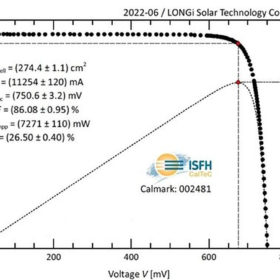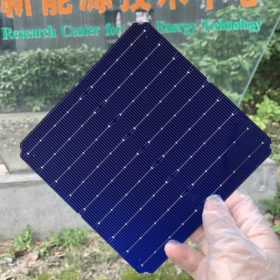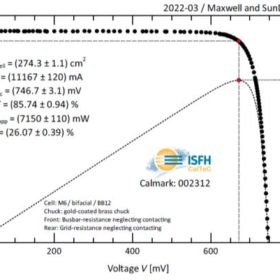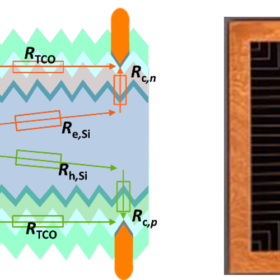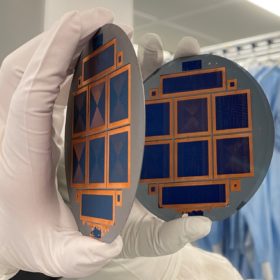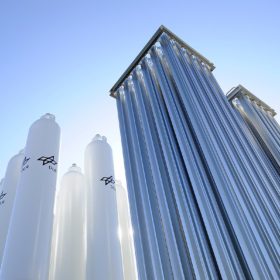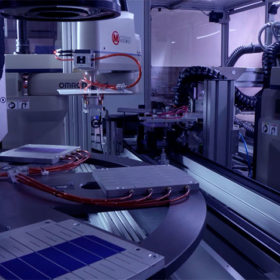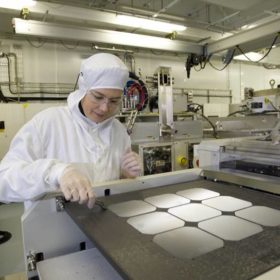Longi’s heterojunction solar cell hits 26.5%
Germany’s Institute for Solar Energy Research Hamelin has confirmed that Longi’s new n-type heterojunction solar cell has achieved a power conversion efficiency of 26.5%.
Heterojunction solar cell with 25.18% efficiency, 85.42% fill factor
Researchers in China have fabricated a heterojunction solar cell with a 244.63 cm2 Czochralski n-c-Si wafer. They used light soaking to improve the dark conductance of the hydrogenated amorphous silicon films.
Enel, European Commission sign grant agreement for 3 GW Italian module factory
Enel plans to invest around €600 million in the expansion of its module manufacturing facility in southern Italy. The European Commission will contribute around €118 million to the total sum.
SunDrive sets 26.07% efficiency record for heterojunction PV cell in mass production
Australian solar startup SunDrive has announced “a breakthrough” in mass production-compatible heterojunction technology, after recording an efficiency result of 26.07% with a silver-free, commercial-size silicon solar PV cell.
Bifacial heterojunction solar cell with 22.84% efficiency, reduced indium consumption
A Dutch-Chinese research team has developed a bifacial heterojunction PV cell with a 67% reduction in transparent conductive oxide (TCO) use. The TCOs used for the cell are based on indium(III) oxide (In2O3), which is considered a technology-critical element by many experts.
Copper-plated heterojunction solar cell with 22.1% efficiency, 0.99 bifaciality factor
Built by a Dutch-Chinese research team, the cell is relying on a new type of hybrid-shaped Cu finger consisting of a rectangular bottom part and a round top part, which was integrated into the cell through a 2-step electrochemical deposition process. The Cu-plated device outperformed both optically and electrically a reference cell fabricated via screen printing.
Low-bandgap GaInNAsSb solar cell for multi-junction architectures
Developed by researchers in Finland, the solar cell is intended to be used as part of lattice-matched multi-junction solar cells. It achieved a short-circuit current density of 15.2 mA/cm2 and external quantum efficiency of 0.79.
PV-powered hydrogen could already hit LCOH of €6.23/kg in Germany
Green hydrogen can now compete with hydrogen produced with fossil fuels in Germany, according to new research. Scientists have looked at six different scenarios for alkaline and PEM electrolyzers and identified alkaline devices powered by grid-connected PV as the cheapest option.
Mondragon Assembly unveils tabber stringer for heterojunction PV cells
Mondragon Assembly has developed a new solution for the interconnection of heterojunction cells with electrically conductive adhesive tech. It can now produce up to 2,600 cells per hour, and is already available on the market.
Ultra-thin silicon layers for 22.2%-efficient heterojunction solar cell
Scientists in the Netherlands fabricated a heterojunction solar cell with a layer of hydrogenated nanocrystalline silicon just three nanometers thick. The cell’s efficiency was measured at 22.2%, below the highest achieved with HJT cells, however, the researchers note that successfully incorporating this material into the cell stack will open many new doors for improvement.
